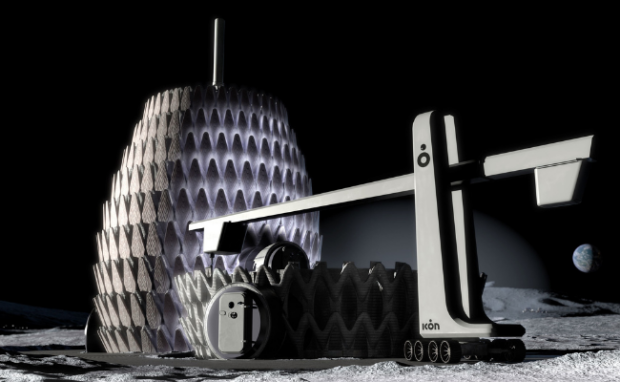NASA taps Austin firm to build Moon houses
The National Aeronautics and Space Administration seems to be serious about creating lunar settlements. NASA told the New York Times it plans to build Moon houses by 2040. Consequently, it partnered with the Austin-based business ICON to construct them. The firm uses 3D printers to build homes that withstand hurricanes and help homeless people.
If NASA fulfills that out-of-this-world goal, we might see people live on the Moon within our lifetimes. Imagine the possibilities of life on another rock outside the Earth! We don’t have to because the space agency’s experts have outlined steps to make a lunar colony possible. Hence, you should check these proposals to glimpse how life on the Moon might work.
This article will discuss how NASA plans to construct Moon homes. Later, I will cover other ways the space agency prepares humans to visit our planet’s oldest satellite and stay there.
How will NASA create Moon houses?

Photo Credit: cnn.com
Raymond Clinton Jr., deputy director of the science and technology office at NASA’s Marshall Space Flight Center, sketched ideas for Moon houses, roads, and landing pads. However, lunar dust is a major issue.
Those particles could damage regular housing materials. Also, launching conventional construction equipment and materials into outer space is nearly impossible.
That is why the space agency collaborated with construction technology company ICON. It will use lunar soil as concrete for its 3D printing home construction.
It will mix that lunar dust into concrete on site to print everything from habitats to rocket landing pads. The company says its technique is a quick, low-cost solution for housing problems on Earth and the Moon.
It works similarly to a conventional 3D printer except larger. It layers concrete to recreate an image from a digital file. Also, Bjarke Ingels Group and SEArch+ (Space Exploration Architecture) drew the designs.
ICON CEO Jason Ballard said, “It’s a surprisingly natural progression if you are asking about the ways additive construction and 3D printing can create a better future for humanity.” However, printing in space is a separate challenge.
You may also like: India shares Moon landing proof
Patrick Suermann, interim dean of the School of Architecture at Texas A&M University, explained, “Chemistry is the same up there, but physics are different.”
Dr. Suermann said the crew that will build the Moon houses must travel light. Surprisingly, every kilogram of weight you add to a Moon-bound rocket costs roughly a million dollars. He also explained carrying materials from Earth to space repeatedly is unsustainable.
“There’s no Home Depot up there. So you either have to know how to use what’s up there or send everything you need.” Still, the dean is confident about the project. “We built a base out of next to nothing in Afghanistan. It’s all the same.”
What are NASA’s other Moon projects?
Valkyrie has headed down under!
Our humanoid robot is continuing testing and development in Australia with a commercial company to create data and lessons learned that @NASA teams will apply to current and future robotics and automation development for use in space.… pic.twitter.com/nDzpolyygJ
— NASA's Johnson Space Center (@NASA_Johnson) July 6, 2023
NASA has been planning lunar settlements for some time, so it has other projects that will facilitate that long-term goal. For example, it built a humanoid robot to scan outer space environments for astronauts.
It will land on a planet or other large heavenly bodies to ensure they’re safe for humans to enter. However, it’s undergoing testing in a Woodside Energy facility in Western Australia.
The robot Valkyrie checks infrastructure for workers. In return, the company will send research data to NASA to help improve the robot. Also, the space agency made machines that can generate two vital resources: water and oxygen.
You may also like: Chinese lunar sample offers new insights
In June 2023, it developed the Environmental Control and Life Support System to recover 98% of water from sweat and other waste. Also, NASA created the Mars Oxygen In-Situ Resource Utilization Experiment or MOXIE a month later.
They may not be specifically for lunar settlements, but they will help people stay in Moon houses. After all, people need sustenance to survive, especially in outer space.
Conclusion
The National Aeronautics and Space Administration partnered with an Austin firm to build Moon houses. ICON will use 3D printing techniques to build homes using lunar soil.
Believe it or not, NASA collaborated with the Defense Advanced Research Projects Agency for LunA-10. It is a project that seeks ideas to support lunar infrastructure.
Technology is advancing so rapidly that it may soon turn humanity into an interplanetary species. Learn more about the latest digital trends at Inquirer Tech.